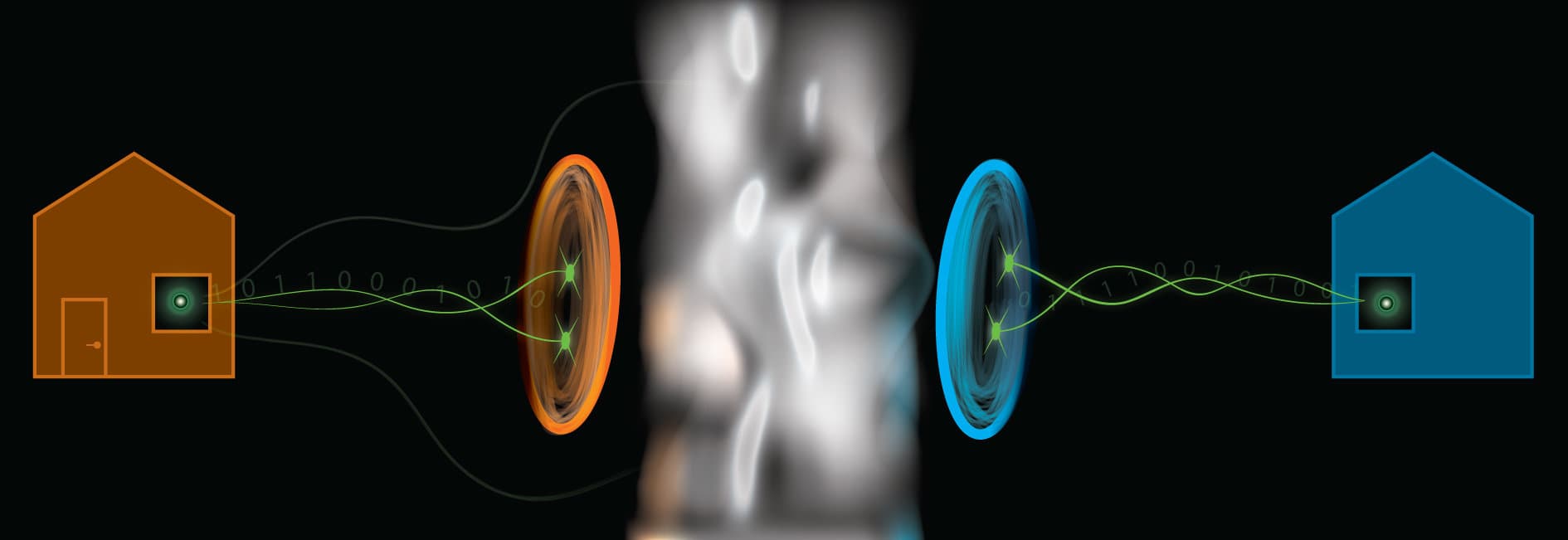Spooky Action
As explored by famed physicist Albert Einstein, two objects separated in space can affect one another without actually being in physical contact with each other. This nonlocal interaction was initially described by Einstein as "spooky action at a distance." Recently, physicists from Griffith's Centre for Quantum Dynamics in Australia have determined a way to use this action to ensure the security of quantum networks.
Their experiment revealed how to test if pairs of photons display this phenomenon, even in difficult conditions. The study, which centers around the effect known as quantum nonlocality, is published in the journal Science Advances. Quantum nonlocality combines the ideas that an object is only directly influenced by its direct surroundings and the assumption that all particles have pre-existing value for any measurement.
This theory is an important part of developing quantum networks through which quantum computers could be linked. Photons — or light particles — can be used to create a quantum link between locations, but only if pairs of photons are first entangled. Once this is accomplished, the properties of one can be determined by measuring the other, forever changing the way we send and receive information.
For a quantum link in such a network to be deemed viable and secure, the presence of quantum nonlocality between particles at either end would have to be confirmed. "Failing the test means an eavesdropper might be infiltrating the network," Geoff Pryde, who led this study, said in a press release.
However, quantum networks are prone to failing this test because a large portion of photons are absorbed or scattered when you send them through something like an optical fiber channel, and a photon cannot pass the test if it is lost while it is being measured. This leaves the network vulnerable to those eavesdroppers.
Quantum Networks
To get past the hurtle of photon loss, the team selected a few photons that survived a high-loss channel and moved them to a different quantum channel via quantum teleportation — a process made possible by high-efficiency photon source and detection tech.
The quantum channel was much more efficient, meaning the photons were much less likely to be lost as they were being measured. "There, the chosen verification test, called quantum steering, could be done without any problem," Morgan Weston, first author of the study, said in the press release.
If these results can be replicated outside of the lab, researchers could be able to build the networks that would connect quantum computers. This network, what many are describing as a quantum internet, could revolutionize the way we communicate.
Current communications, as many have found the hard way, are prone to hacking and interference. Information is a powerful weapon when it gets into the wrong hands, and protecting it is vital on a personal level, and even a national one. In fact, the United States has even proposed a new military branch that would specialize in the defense of orbiting satellites because it is so essential to protect secure information.
A quantum internet could usher in far more secure digital communications, affording individuals and governments more protections for their information. Gaining the ability to test if photons display the "spooky action at a distance" despite photon loss is a huge milestone in the journey to actualizing a quantum internet. As quantum computers develop and studies like this advance, we inch ever closer to this reality.
Share This Article
